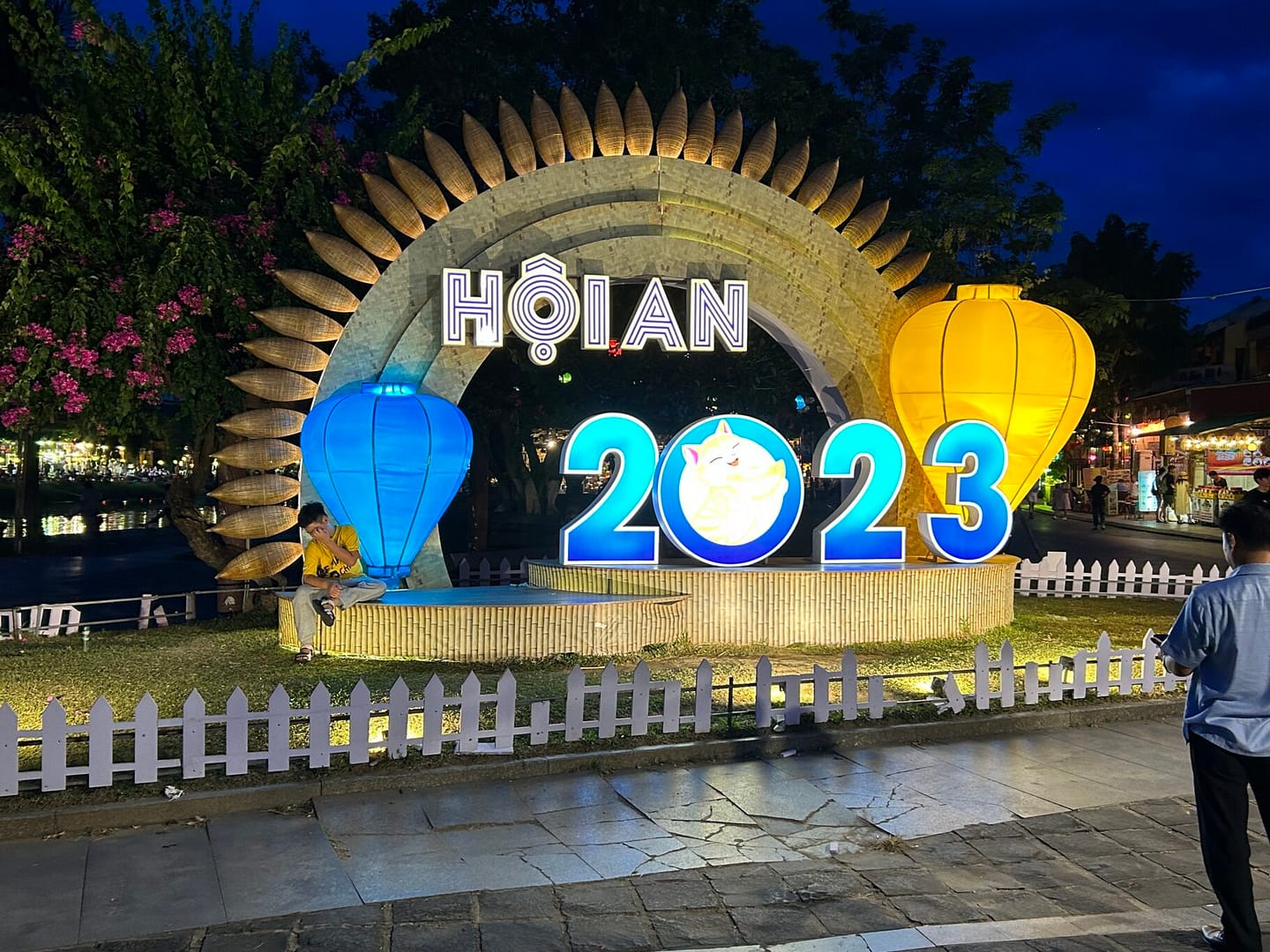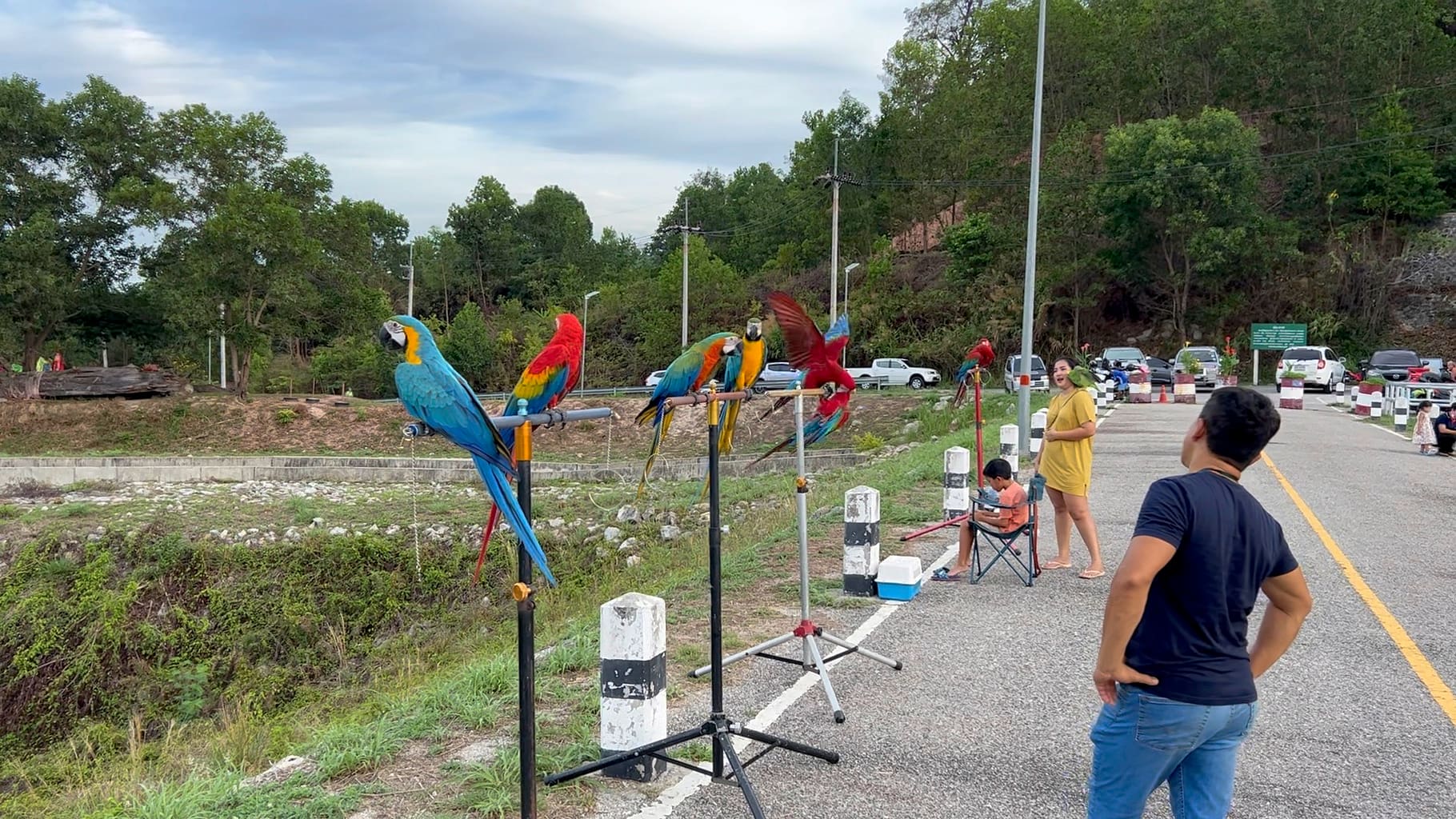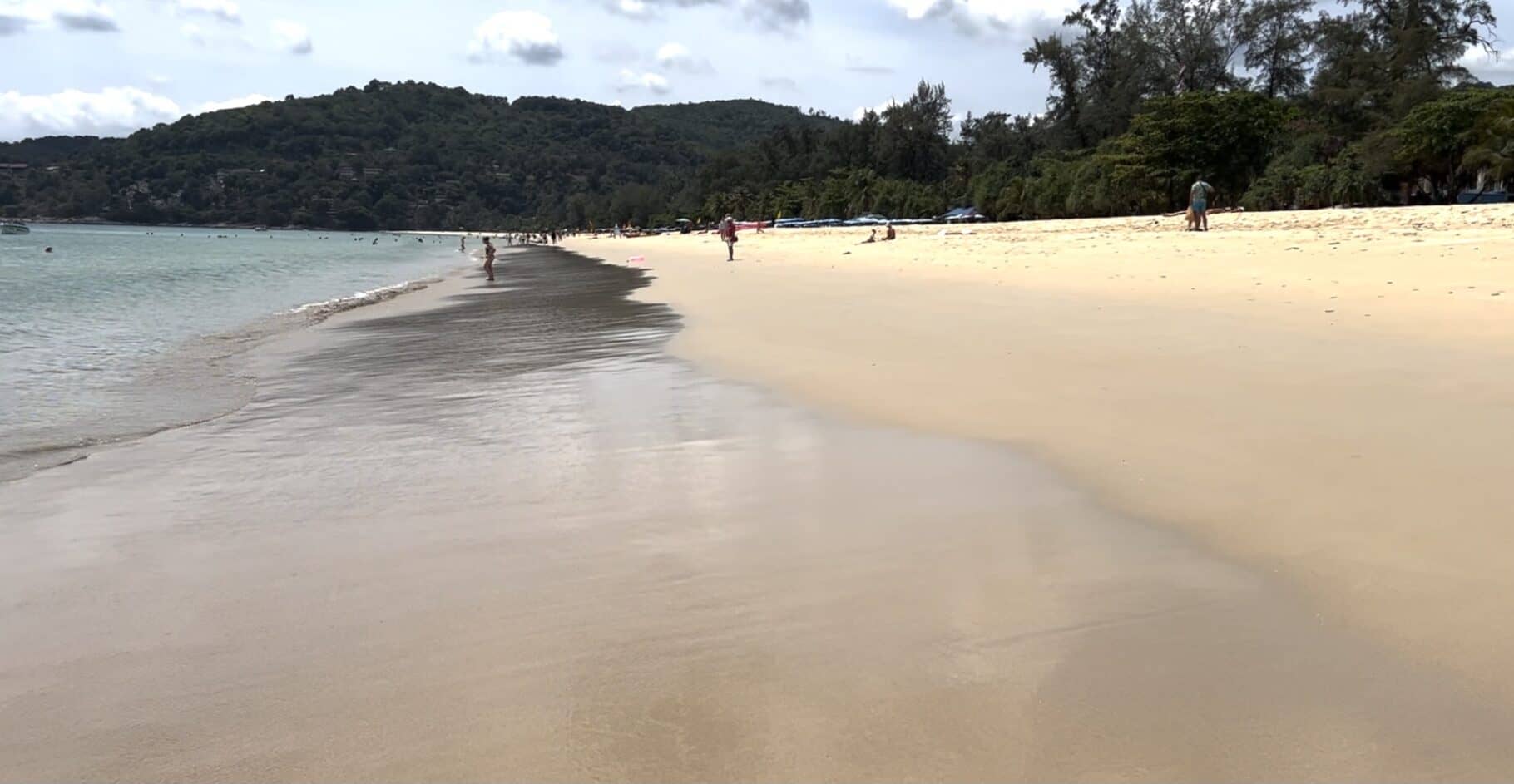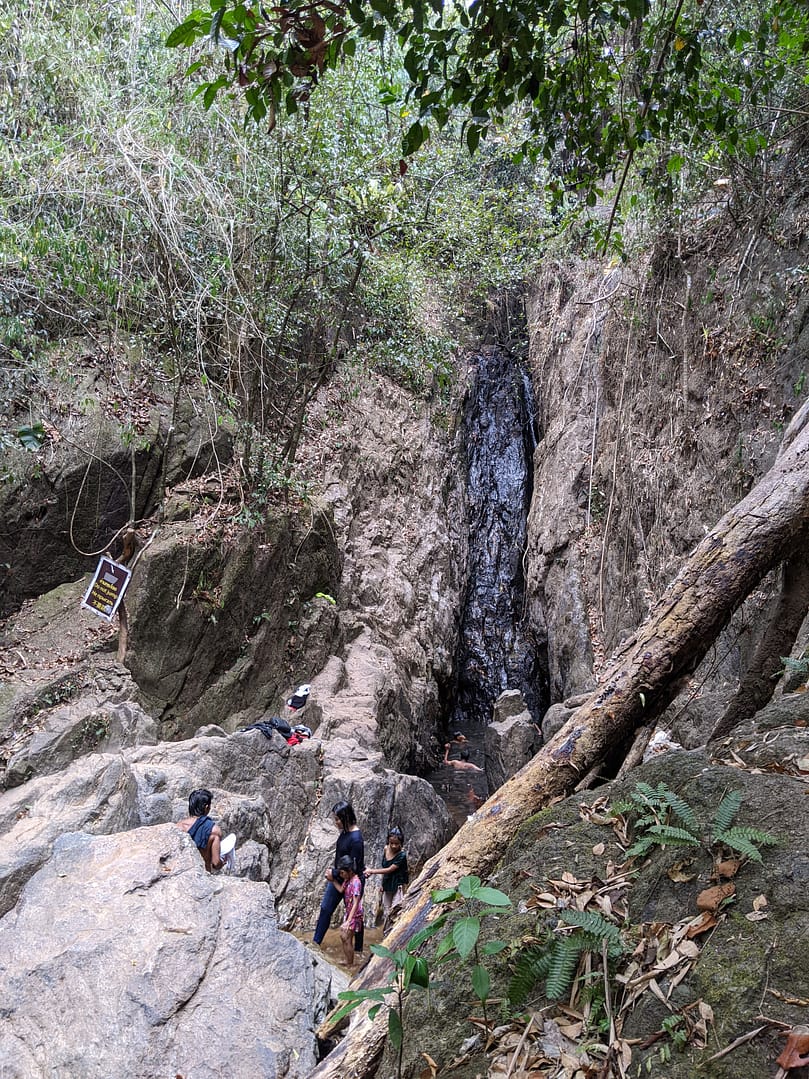We were lucky enough to have an entire month to spend in Vietnam. While there are plenty of travel itineraries out there that would have us touring the whole country south to north with a new site everyday, we wanted to do things a bit different. We wanted to pick one place and truly immerse ourselves in the culture, the pace of life, and the local geography.
Vietnam is a big country, and it was hard to limit ourselves to one place. We wanted a smaller town, not a huge megapolis – so Hanoi and Ho Chi Minh City were out. We wanted to spend some time on the beach, so as lovely as it looked, Sapa was out. We wanted somewhere moderately close to an airport and a bit of a city. And we wanted somewhere with sites we could explore on foot. The winner? Hoi An, Vietnam!
The History of Hoi An
Hoi An is designated as a UNESCO site to preserve its unique architecture and town layout as a prominent Southeast Asia trading port in the 15th to 19th century. Thanks to its unique history, the town feels frozen in time, and visitors can easily imagine that they are traders wandering the streets of 17th century Asia.
Hoi An is located near the mouth of the Thu Bon River. It began in the 7th century as the commercial center of the Chams, an ancient people living in Vietnam. (Their spiritual center was the nearby My Son Sanctuary.) Control of Hoi An changed hands through the years but its location along a major waterway ensured that it remained an important center of trade. However, at the end of the 18th century, the politics of the area became opposed to foreign trade. Additionally, the river mouth began to silt up, making transport from the ocean to Hoi An difficult for the deep-drafted trading ships. These factors lead to Da Nang taking over much of the trade in the region beginning in the 1800s. As a result, the buildings and street layout of Hoi An remain mostly unchanged from how they appeared in the 1700s.
When Hoi An was a bustling trading town, it welcomed people from a wide range of places and cultures. It was not uncommon to see Chinese, Japanese, Dutch, and Portuguese traders rubbing shoulders with one another. Many traders established households in Hoi An, as they spent many months of the year away from their homeland. Some of the ethnic groups built assembly halls for their members to meet, support each other, and worship. Five assembly halls have been preserved in Hoi An, each dedicated to a different Chinese ethnicity. There was also a Japanese quarter in Hoi An, which was linked to the Chinese side via the famous Japanese Covered Bridge.
Visiting Hoi An Old Town
There is an entrance fee of 120,000 VND ($5) to explore Hoi An Old Town. This applies only to the UNESCO designated area, which encompasses about 5 blocks along the north bank of the river. An entry ticket will also give you a free pass into five of the many historic buildings located in Hoi An – the list includes Ancient Houses, Museums, Temples, Assembly Halls, and the Japanese Covered Bridge. You will need to show your ticket if you want to walk through these buildings. (Note that many close to tourists by 6 PM.) However, if you are just walking the streets on your own, and not entering buildings, it is unlikely you will be asked to show your ticket.
There is plenty to do on the other side of the river, too! The small island directly across from the Old Town is called An Hoi. This is not part of the UNESCO site, but it is definitely worth visiting. It is accessed by two bridges at either end of the island. In the evenings vendors, food stalls, artists, and craftsmen all display their wares along the riverfront. The Lune Center theater has shows most nights starting at 6 PM.
Motor traffic is banned from the Old Town from 8:30-11 AM and 3-9PM. If you are traveling by motorbike, you will need to park in one of the three designated parking lots on the outskirts of the town. If you arrive at the beginning of the evening, it may not be obvious where the parking lot is, but by 6 PM there will be lots of other scooters lined up. Double parking is common, so ask the attendant to help you if your bike isn’t easily accessible. There doesn’t seem to be a consistent process in the parking lots we used around Hoi An. Some give you a claim ticket, some write a number on your bike with chalk, some take payment up front and some when you pick up your bike. The attendant doesn’t wear a noticeable uniform. We did worry about scams (apparently stolen bikes are an issue in Vietnam) but we only had one problem: We were told the official parking rate was 5,000 VND but every single attendant insisted it was 10,000 VND. We decided not to make a fuss as either way it was less than fifty cents!
Our Experience Exploring Hoi An Old Town
We loved walking the streets of Hoi An! While you can join a tour group, it is much more fun to wander on your own, observing and discovering. The streets wind along and around each bend is a new surprise.
There is the food market, an open-aired pavilion with venders selling a huge assortment of spices, teas, coffees, fruits, vegetables, fish, and meat (pig feet, anyone?). A brief pause in your walking gait is sure to bring the attention of the nearest spice salesman with a demand to smell their spices and see for yourself how fresh they are. Cinnamon is a local commodity here and the variety they sell, Saigon cinnamon, is known as being especially strong.
Away from the market, the small streets are lined with tiny storefronts and restaurants. Many of the restaurants have only four or five tables, with the children waiting tables and mom or dad cooking in the back. The shops sell mostly one type of good – lanterns, or leather bags, or handpainted artwork.
Interspersed throughout the town are historic buildings preserved as near as possible to their 17th century appearance. The museums have exhibits and performances to give you a glimpse into traditional Vietnamese life. Some of the temples and pagodas are still actively used as religious centers. We walked over the Japanese Covered Bridge, in the footsteps of the millions of other travelers over the centuries of its history.

In the evenings, Hoi An becomes absolutely enchanting as hundreds of lanterns light the town in a soft glow of reds, yellows, greens, and blues. We were able to visit Hoi An during one of the Full Moon Festivals. There were, if possible, even more lanterns than normal! Anchored In the center of the river, giant man-made lotus flowers floated. Sampan boats with a lantern at each end carried tourists slowly back and forth along the river. Old women offered up paper lanterns with a lit candle for visitors to release into the water, along with a wish. It was truly a magical night!
The Cons of Hoi An
While we had a truly amazing time in Hoi An and the surrounding environs, there was one drawback I feel I must mention. The street vendors are EXTREMELY aggressive. I felt like I could handle any marketplace after visiting Mumbai, India several years ago, but Hoi An definitely takes the cake in terms of pushy salesmanship. During one interaction, we asked the vendor to give us some space to discuss a purchase. We walked about 30 feet away to a quiet corner, only to look over our shoulder and see the woman had followed us and was standing six inches away! Needless to say she lost our business. Similar scenarios happened each time we visited the Old Town.
Please know that we found these aggressive attitudes only in the Old Town, not in the rest of Hoi An or the other places we visited in Vietnam. And we can understand their position. These people make their living selling to tourists who usually visit only for one or two days. The sale will happen literally either now or never. A street-cart seller doesn’t need to worry about bad reviews online driving away business – her more pressing concern is her competitor ten feet away selling the exact same thing. Thus, a pushy sales technique results. Plan your shopping sprees accordingly! Expect to be bombarded by offers for spices, trinkets, cocktails, boat rides, and floating lanterns at least twice every minute.
Hoi An is also the only city we have ever been to where we were actually pickpocketed (a failed attempt, fortunately). We were taking a break on a park bench when a small child sidled up to Joe and literally put his hand in Joe’s pocket to grab his wallet. Joe foiled his attempt, and the kid spit on Joe instead! The child was obviously being directed by some adult in the area. We suspect that it was two women in traditional dresses who approached us while the child sat next to us. They tried to get us to take pictures, and in hindsight it seemed an effort to distract us. It is really unfortunate that the child is learning such bad morals.

What Else We Like About Staying in Hoi An
International Airport
Hoi An is located a mere thirty minutes from Da Nang, Vietnam’s fifth largest city and home to an international airport. It is not as big as the airports in Hanoi or Ho Chi Minh City, but it does have direct flights to several hubs in southeast Asia, including Bangkok and Seoul. Plus, the smaller size means the lines for check-in and security are shorter.
The Beaches
Hoi An is built on the northern shore of the Thu Bon river delta. There are several beautiful beaches close by: Cua Dai, Ha My, and My An. The entry into the water here is very shallow, so you can wade a long way out and only have the water come up to your shoulders. And that makes for some warm water, averaging in the mid-80s. Even better, the beaches are nearly deserted for most of the day!
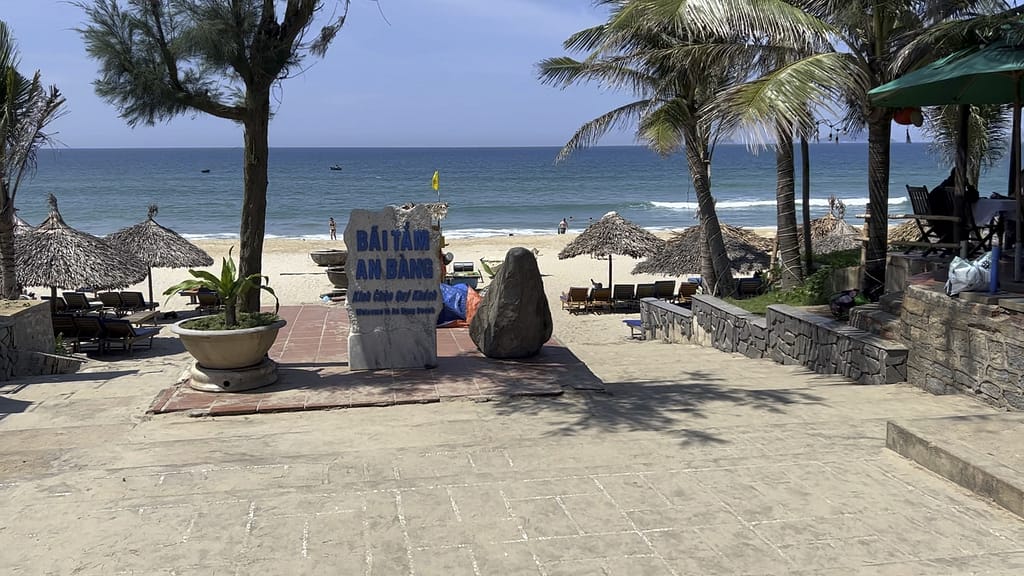
The Food
We did not had much experience with Vietnamese food prior to our trip, so it was a delight to try so many authentic dishes right where they came from. Banh mi, pho, cao lau… all so delicious! Plus, with the Tra Que Vegetable Village less than a mile away, the food was unbelievably fresh. During our day trips through the countryside surrounding Hoi An, we had some amazing local cuisine. But one thing we didn’t expect was how much we enjoyed getting non-Vietnamese food as well. Hoi A caters to tourists and as such there is a plethora of options in their restaurants. Many of them deliver very cheaply via the Grab app. This was a perk living near Hoi An – most of the other Vietnamese towns did not have such a variety of international cuisines.

